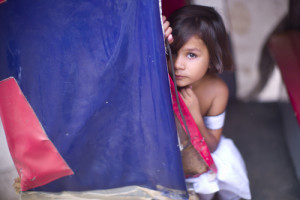 Zulfiqar Bhutta, MBBS, PhD, inaugural chair in global child health at the Hospital for Sick Children, Toronto, and founding director of the Center of Excellence in Women and Child Health, Aga Khan University, Pakistan, is a global child health superstar. Presidents, prime ministers and princes welcome his advice. Yet India ignored him when he called its proposed innovation to curb infant mortality “nonsense.” “I was dead wrong,” says Bhutta. “What happened is remarkable.”
Zulfiqar Bhutta, MBBS, PhD, inaugural chair in global child health at the Hospital for Sick Children, Toronto, and founding director of the Center of Excellence in Women and Child Health, Aga Khan University, Pakistan, is a global child health superstar. Presidents, prime ministers and princes welcome his advice. Yet India ignored him when he called its proposed innovation to curb infant mortality “nonsense.” “I was dead wrong,” says Bhutta. “What happened is remarkable.”
The simple innovation, which Bhutta now publicly commends, cut perinatal mortality 25 percent.
Paying pregnant mothers
In 2005, India’s government proposed a conditional cash transfer program to encourage women to give birth in the hospital. A successful implementation of the program, which sought to change entrenched social and cultural patterns, seemed unlikely, thought Bhutta.
Yet India ignored the naysayers and plunged ahead. Now, 80 percent of births occur in health facilities, and the program has reached the poorest of the poor. The cash transfer program goes far beyond a pilot project and has been deployed at scale. Reimbursement to mothers ranges from 600 rupees (U.S. $13) in urban areas to 1,400 rupees (U.S. $31) in other areas.
Knowing vs. doing
The cash transfer program breached the “know-do” gap—the chasm between what is known and what is done. Bhutta believes this gap has hindered attainment of global child health Millennium Development Goal (MDG) 4, which aims to reduce mortality among children under age 5 by two-thirds by 2015, from the 1990 base figure of 12 million.
During the last two decades, developing countries have made significant progress toward MDG 4, halving annual deaths to 6.6 million. However, making further progress requires overcoming insidious challenges, such as the large portion of newborn and maternal deaths that occur during home birth. That’s where innovation enters. “Innovation can accelerate implementation and make things happen at scale,” says Bhutta.
Another effective concept that garnered massive initial pushback, partially because it relies on nontraditional health experts, is the use of community health workers. Multiple developing nations have deployed these projects, training cadres of community health workers who work with women and families on a variety of public health and advocacy interventions.
“They’ve been able to reach those who weren’t being reached and have had a remarkable impact,” says Bhutta. These programs have cut newborn mortality by 25 to 30 percent and reduced maternal morbidity by a similar amount.
Empowered communities
“It’s difficult to measure empowerment,” admits Bhutta. However, the multigenerational community counselling sessions often address social barriers, partially by engaging older women who act as role models for young mothers. In many cultures and communities, older women pressure young women to cling to traditional care models that tend to be less healthy. Helping older women understand the negative health consequences of these behaviors has a trickle-down effect; they are less likely to pressure young women to cling to old ways.
Community counselling sessions have prompted behavior changes such as the use of clean delivery kits during childbirth and early and consistent breastfeeding. Counselling sessions also often include adolescent girls, introducing health-promoting behaviors at younger ages.Bhutta sees an expanded role for community health workers, noting that they can be taught more complex skills like the detection and management of severe pneumonia.
Ultimately, Bhutta espouses a creative, yet pragmatic, approach to MDG targets and innovation. “Business as usual will not take us to the MDG targets,” he says. “Focus on incremental gains: The ideal should not hold us back from the doable.”







